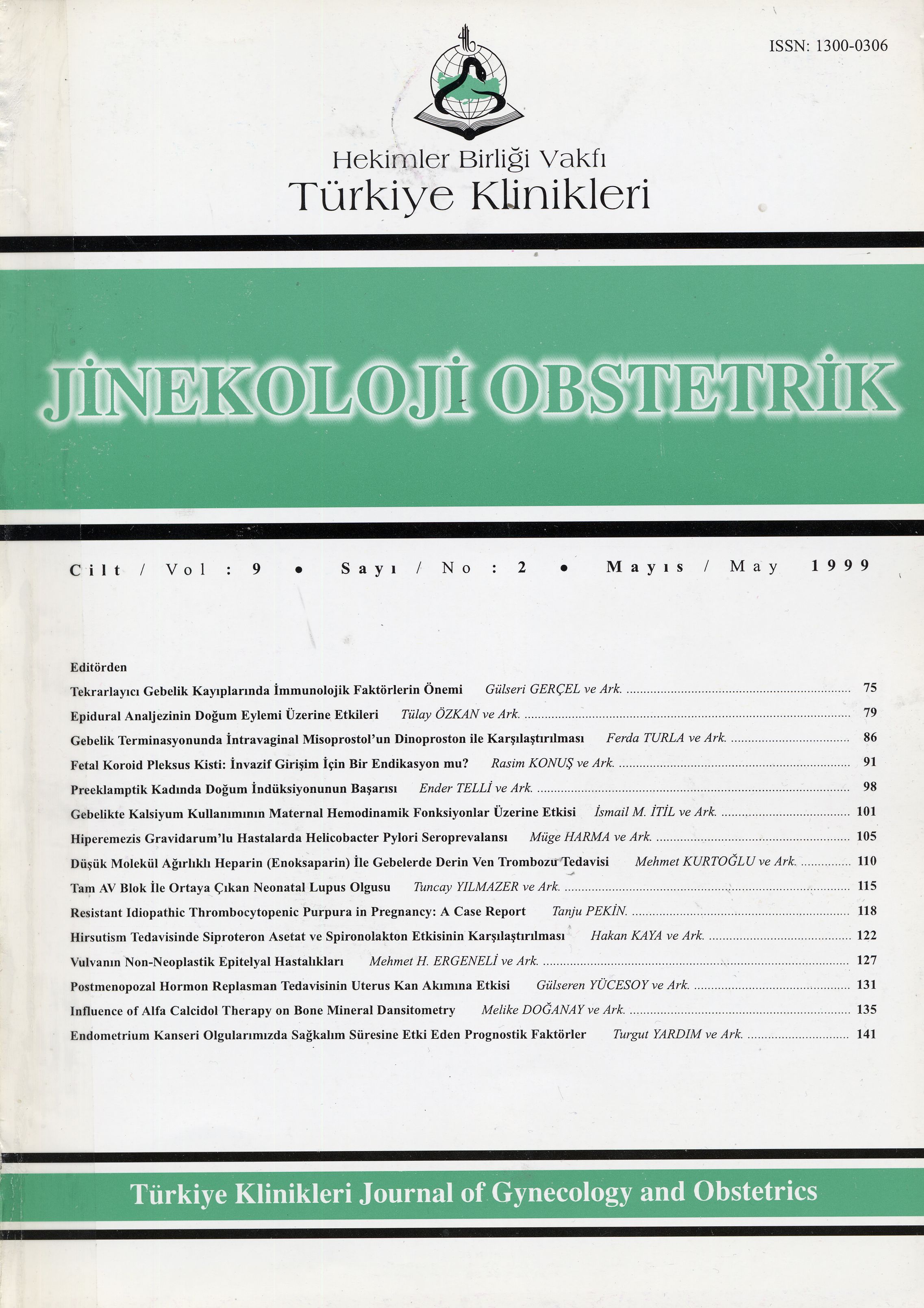Open Access
Peer Reviewed
ARTICLES
3120 Viewed1632 Downloaded
The Case Of Neonatal Lupus With Complete Heart Block
Tam Av Blok İle Ortaya Çıkan Neonatal Lupus Olgusu
Turkiye Klinikleri J Gynecol Obst. 1999;9(2):115-7
Article Language: TR
Copyright Ⓒ 2025 by Türkiye Klinikleri. This is an open access article under the CC BY-NC-ND license (http://creativecommons.org/licenses/by-nc-nd/4.0/)
ÖZET
Amaç: Asemptomatik anneden doğan, konjenital kalp bloğu olan neonatal lupuslu olgu sunumu. Çalışmanın yapıldığı yer: Uludağ Üniversitesi Tıp Fakültesi Çocuk Sağlığı Hastalıkları Anabilim Dalı. Materyel ve Metod: Fetal bradikardi saptanması nedeniyle, 33 haftalık iken doğurtularak kliniğimize sevkedilen, annede anti Ro/SS-A ve anti Ro/SS-B pozitif saptanarak neonatal lupus tanısı konulan bebek. Bulgular: Tam AV blok saptanan olguya bradikardisinin devam etmesi nedeniyle kalıcı pacemaker takıldı. Dokuz aydır sorunsuz olarak izlenmektedir. Sonuç: İzole tam AV Bloklarda hidrops fetalis ve mortalite daha azdır. Prematüre ve SGA bebeklerde, kalıcı pacema-ker takılması teknik olarak zorluk gösterdiğinden, bebek miada yakın doğurtulmaya çalışılmalıdır.
Amaç: Asemptomatik anneden doğan, konjenital kalp bloğu olan neonatal lupuslu olgu sunumu. Çalışmanın yapıldığı yer: Uludağ Üniversitesi Tıp Fakültesi Çocuk Sağlığı Hastalıkları Anabilim Dalı. Materyel ve Metod: Fetal bradikardi saptanması nedeniyle, 33 haftalık iken doğurtularak kliniğimize sevkedilen, annede anti Ro/SS-A ve anti Ro/SS-B pozitif saptanarak neonatal lupus tanısı konulan bebek. Bulgular: Tam AV blok saptanan olguya bradikardisinin devam etmesi nedeniyle kalıcı pacemaker takıldı. Dokuz aydır sorunsuz olarak izlenmektedir. Sonuç: İzole tam AV Bloklarda hidrops fetalis ve mortalite daha azdır. Prematüre ve SGA bebeklerde, kalıcı pacema-ker takılması teknik olarak zorluk gösterdiğinden, bebek miada yakın doğurtulmaya çalışılmalıdır.
ANAHTAR KELİMELER: Neonatal Lupus; Fetal bradikardi
ABSTRACT
Objective: A case report of neonatal lupus congenital complete heart block , delivered from an asymptomatic mother. Institution: Uludağ University School of Medicine, Department of Pediatrics Material and Method: A newborn who had been delivered at a gestational age of 33 weeks due to fetal bradycardia diagnosed as neonatal lupus syndrome because his mother had antiRo/SS-A, antiLa/SS-B antibodies. Results: Permanent pacemaker was placed due to the determination of complete AV block and persistance of bradycardia. The patient is followed up for nine months without any problem. Conclusion: Hydrops fetalis and mortality are less common in preterm and SGA newborn who are isolated congenital heart block. Those newborns should be delivered near term because the placement of permanent pacemaker is technically difficult in preterm and SGA newborns.
Objective: A case report of neonatal lupus congenital complete heart block , delivered from an asymptomatic mother. Institution: Uludağ University School of Medicine, Department of Pediatrics Material and Method: A newborn who had been delivered at a gestational age of 33 weeks due to fetal bradycardia diagnosed as neonatal lupus syndrome because his mother had antiRo/SS-A, antiLa/SS-B antibodies. Results: Permanent pacemaker was placed due to the determination of complete AV block and persistance of bradycardia. The patient is followed up for nine months without any problem. Conclusion: Hydrops fetalis and mortality are less common in preterm and SGA newborn who are isolated congenital heart block. Those newborns should be delivered near term because the placement of permanent pacemaker is technically difficult in preterm and SGA newborns.
MENU
POPULAR ARTICLES
MOST DOWNLOADED ARTICLES





This journal is licensed under a Creative Commons Attribution-NonCommercial-NoDerivatives 4.0 International License.










